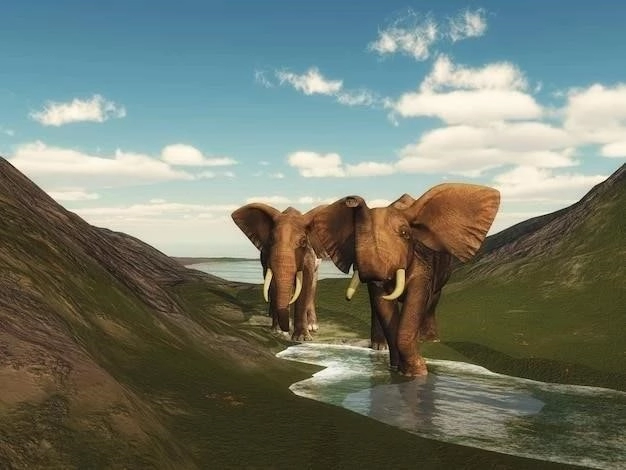Ive always been fascinated by the idea of animal migration. The thought of creatures big and small, traversing vast distances across the globe, navigating by instinct and celestial cues, is simply mind-blowing. Last year, I decided to experience this wonder firsthand. I joined a group of researchers studying the monarch butterfly migration in North America.

A Flutter of Orange and Black
We started our journey in southern Canada, where millions of monarch butterflies gather in late summer, preparing for their long journey south. I was awestruck by the sheer number of butterflies. The air was thick with a flutter of orange and black wings, a sight Ill never forget.
We followed the monarchs as they flew south, stopping at various points along their route. We observed them feeding on nectar, gathering energy for the next leg of their journey. I learned that these tiny creatures, weighing less than a gram, can travel up to 100 miles a day!
Navigating by Instinct and Sunlight
What amazed me the most was their navigation. They use a combination of instinct, the earths magnetic field, and the position of the sun to guide them. Its like they have an internal compass, leading them thousands of miles to a place theyve never been before.
Our journey took us through the United States, where we witnessed the monarchs congregating in huge numbers at certain stopover points. These stopovers are crucial for their survival, providing them with much-needed rest and nourishment.

Reaching the Wintering Grounds
Finally, after weeks on the road, we reached the monarchs wintering grounds in the mountains of central Mexico. Millions of butterflies clustered together on oyamel fir trees, creating a breathtaking spectacle. It was like stepping into another world, a world painted orange and black.
Witnessing the monarch butterfly migration firsthand was a truly humbling experience. It made me realize the incredible power of nature and the importance of protecting these amazing creatures and their migratory routes. Its a journey Ill never forget, and one that continues to inspire me to this day.
As the sun began to set, casting long shadows across the oyamel forest, I felt a profound sense of peace. It was as if I was witnessing a secret, ancient ritual, a testament to the enduring power of nature. The air grew chilly, and the butterflies, seeking warmth, huddled closer together, their wings brushing against each other, creating a soft, rustling sound.
I spent the next few days observing the monarchs, marveling at their resilience. I learned that these butterflies are part of a super-generation, capable of living up to nine months, much longer than their parents generation. This extended lifespan allows them to complete their incredible migration and ensure the survival of their species.
One evening, as I sat journaling about my experience, a young girl, maybe eight years old, approached me. Her name was Alejandra, and she lived in a nearby village. She was curious about the butterflies and asked me countless questions about their journey. I did my best to explain, sharing what I had learned about their navigation, their life cycle, and the importance of protecting their habitat.
As I spoke to Alejandra, I realized that the monarch butterfly migration was more than just a scientific marvel; it was a symbol of hope, a reminder that even the smallest of creatures can achieve extraordinary things. It was a story that needed to be shared, a story that connected us all, across borders and generations.
As dusk settled in, painting the sky in hues of purple and orange, I said goodbye to Alejandra, promising to visit her village the next day. I wanted to learn more about the people who lived alongside these incredible creatures, who shared their lives and their land with the migrating monarchs.
The following morning, I made my way to Alejandras village, a small, vibrant community nestled amidst rolling hills. The villagers welcomed me with open arms, eager to share their stories and their deep respect for the butterflies. They called the monarchs “las mariposas monarcas,” the monarch butterflies, and spoke of them with a reverence usually reserved for revered ancestors.
An elderly woman, her face etched with wisdom and time, invited me into her home. Her name was Esperanza, and as she spoke, her words flowed like a gentle stream, carrying with them the weight of generations past.
Esperanza told me that her people had always lived in harmony with the butterflies. They believed that the monarchs carried the souls of their loved ones, returning each year to visit and bless their land. She spoke of ancient rituals and ceremonies, passed down through generations, honoring the butterflies and celebrating their arrival.
I spent the rest of the day listening to Esperanzas stories, captivated by her words and the deep connection she shared with the natural world. I realized then that the monarch butterfly migration was more than just a scientific phenomenon; it was a cultural touchstone, a thread that wove together the past, present, and future. It was a reminder that we are all interconnected, humans and nature, sharing this fragile planet we call home.
As Esperanza spoke, the aroma of spices and roasting chiles wafted through the air, reminding me that I hadnt eaten since breakfast. Sensing my hunger, she insisted I stay for lunch. I gratefully accepted, my stomach rumbling in anticipation.
We sat down to a simple but delicious meal of freshly made tortillas, black beans, and a flavorful stew made with local vegetables and herbs. As we ate, Esperanzas granddaughter, a bright-eyed girl named Luna, joined us. Luna, I learned, was fascinated by the monarchs, just like her grandmother. She spent hours each day observing them, sketching their intricate wing patterns in her notebook.
After lunch, Luna insisted on taking me to her favorite spot in the forest, a secluded grove where the monarchs gathered in droves. As we walked, she pointed out the different types of wildflowers that grew along the path, sharing their names and medicinal properties. Her knowledge of the local flora and fauna was impressive, a testament to the generations of wisdom passed down within her family.
We reached the grove, and I gasped in awe. The air buzzed with the gentle hum of millions of butterfly wings. Sunlight filtered through the trees, casting an ethereal glow on the clusters of monarchs clinging to the branches. It was like stepping into a living, breathing kaleidoscope, a symphony of orange and black.
Luna, her eyes sparkling with wonder, reached out a hand, and a monarch butterfly landed softly on her finger. She giggled with delight, and for a moment, time seemed to stand still. I watched as she gently stroked the butterflys wings, her touch filled with reverence and love. It was a moment of pure magic, a testament to the powerful bond between humans and nature.
As the sun began to set, casting long shadows across the forest floor, Luna and I made our way back to the village. I felt a profound sense of gratitude for the opportunity to witness this incredible natural wonder and to connect with the people who lived in harmony with it. The monarch butterfly migration was more than just a journey; it was a testament to the interconnectedness of all living things, a reminder that we are all part of something much larger than ourselves.
Leaving the monarch sanctuary the next day, I felt a profound shift within me. It was more than just the awe of witnessing such a spectacle of nature; it was the realization of our interconnectedness with all living things. Esperanzas stories, Lunas innocent wonder, the villagers deep respect for the butterflies — it all wove a tapestry of understanding that extended far beyond any scientific explanation.
I carried this newfound perspective with me as I continued my travels, my senses heightened, my heart more open. In the savannas of Kenya, I watched in breathless silence as a herd of zebras thundered across the plains, their stripes a mesmerizing blur against the red earth. Their migration, a desperate search for water and fresh grazing lands, mirrored the monarchs quest for survival, a reminder that the cycle of life, though beautiful, is also fraught with challenges.
Later, on a small boat bobbing gently on the turquoise waters of the Pacific Ocean, I held my breath as a humpback whale breached the surface just meters away. The sheer size and power of the creature took my breath away, and yet, there was a grace, an elegance in its movements that spoke of an ancient wisdom. Their epic journey, spanning thousands of miles from feeding grounds to breeding areas, spoke of an unwavering instinct, a deep connection to the rhythms of the ocean.
Each encounter, each migration witnessed, added another thread to the intricate tapestry of understanding that was forming within me. I began to see the world through new eyes, recognizing the patterns and connections that had always existed but had previously remained hidden. The migrations, once seemingly disparate events, became intertwined, a global symphony orchestrated by nature itself.
But my journey wasnt just about witnessing the beauty and wonder of animal migrations; it was also about confronting the threats they face. Climate change, habitat loss, human encroachment — these are just some of the challenges that are pushing many migratory species to the brink.










